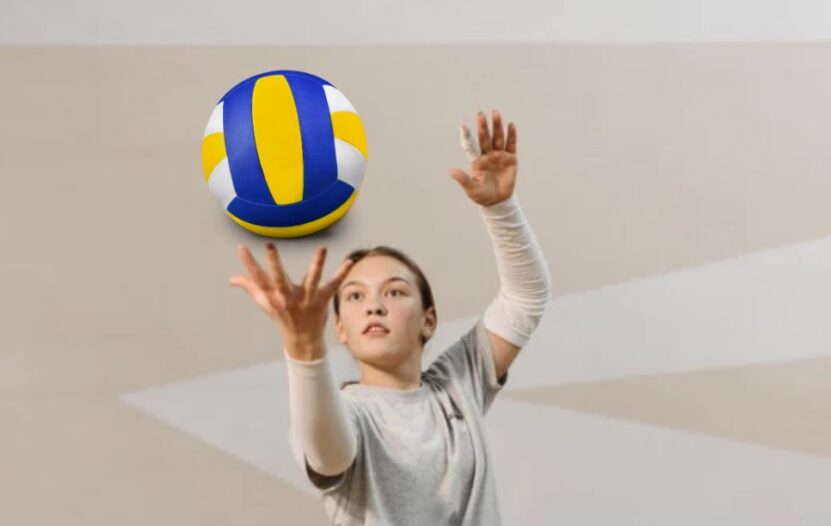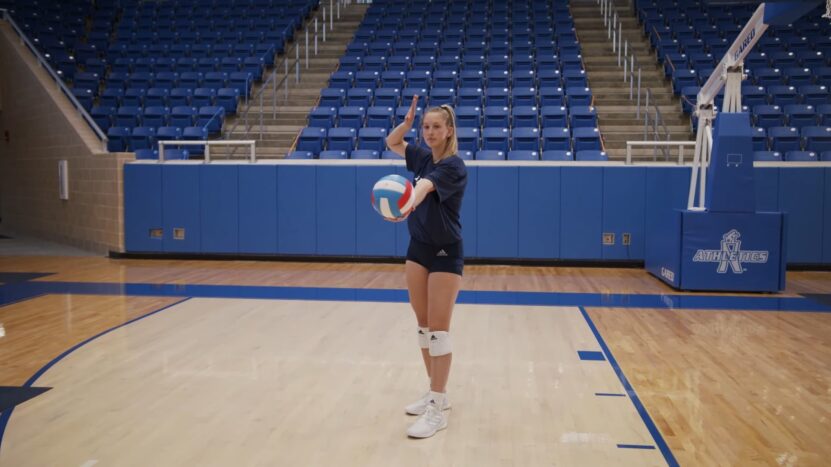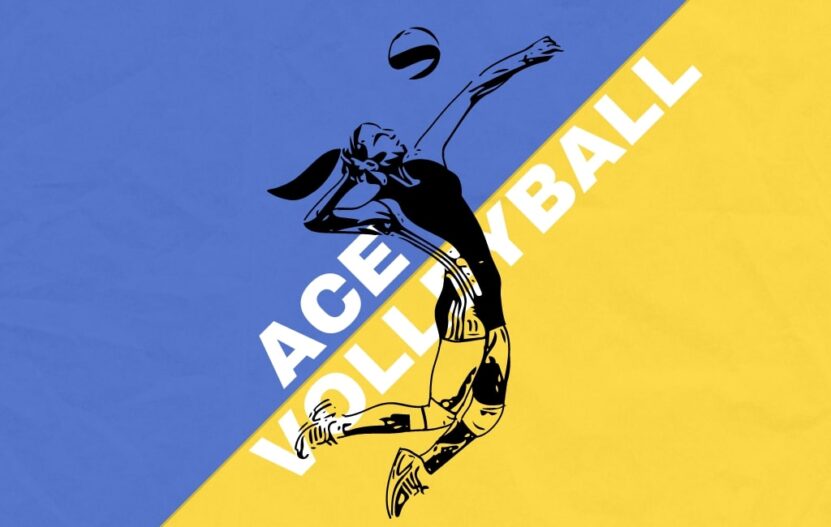If you’ve ever been captivated by the power, speed, and strategic depth that volleyball offers, you’re not alone. This fantastic sport, steeped in teamwork and athleticism, has fans worldwide. One term you’ll often hear while watching a game or even playing is “Ace.” But what does this term mean? Today, we’re going to dive into what an Ace is, why it’s so crucial in volleyball, and how you can improve your chances of scoring one.
Ace Explained

Simply put, an Ace in volleyball is a serve that results directly in a point. It happens when the server sends the ball over the net, and the opposing team fails to return it. It’s considered one of the most exciting moments in a volleyball game because it showcases a player’s skill and can dramatically swing the momentum of a match.
An Ace can occur in several ways:
- The ball lands directly in the opponent’s court. This can happen if the serve is exceptionally accurate or powerful or if the receiving team misjudges the ball’s trajectory.
- The receiving team touches the ball but can’t control it. Sometimes a serve is so powerful or unpredictable that even if the receiving team touches it, they can’t return it successfully.
- The ball touches the boundary line. In volleyball, if any part of the ball touches the boundary line, it’s considered in. So, a serve that just brushes the line can be an Ace.
The Significance of An Ace
In volleyball, every point matters, and an Ace is a powerful way to secure a point. Here’s why an Ace holds such weight in a match:
- It’s a direct point. In most situations in volleyball, teams need to rally back and forth to win a point. However, with an Ace, the server scores immediately after their serve, making it a highly efficient way to score.
- It boosts the team’s morale. A successful Ace can tremendously boost the server’s and the team’s confidence, contributing to improved performance and a positive mindset throughout the match.
- It disrupts the opponent’s rhythm. An Ace can disrupt the receiving team’s momentum and strategy, potentially leading to a series of points for the serving team.
Mastering the Ace

Now that we understand what an Ace is and its significance, let’s look at some strategies to help you ace your Ace!
Perfect Your Serve
An Ace starts with a serve, so it’s crucial to have a reliable, powerful, and accurate serve. Practice both overhand and underhand serves, and work on varying the speed, spin, and trajectory. The more unpredictable your serve, the harder it will be for the opposing team to return it.
Understand Your Opponents
Take the time to observe your opponents. Identify their weak receivers or areas of the court they tend to leave unprotected. By targeting these, you can increase your chances of scoring an Ace.
Use Spin and Power
Applying spin to your serve can make it unpredictable and difficult to return, increasing the chances of an Ace. Power, when used appropriately, can also make your serve challenging to handle.
Consistency is Key
While power and spin are useful, consistency is arguably more important. A serve that always lands in the opponent’s court puts constant pressure on them and increases your chances of scoring an Ace.
The Role of the Ace in Different Types of Volleyball
Understanding the Ace and how to execute it efficiently is important across various forms of volleyball. Let’s delve into how the Ace plays a role in beach volleyball and indoor volleyball.
Beach Volleyball
In beach volleyball, teams are made up of only two players, which means there are larger areas of the court to defend. This scenario provides a fantastic opportunity for Aces. The key in beach volleyball is to serve strategically, exploiting the vast spaces and wind conditions. Consider using float serves, where the ball moves unpredictably in the air, making it challenging to return.
Indoor Volleyball
In indoor volleyball, teams are larger, and the court is more congested. However, the Ace remains a vital weapon. A well-placed serve can exploit gaps in the opposition’s formation, or target weaker receivers. Additionally, jump serves – where the server tosses the ball, takes a run-up, and jumps to hit it – can add power and topspin, making the ball dive quickly and become difficult to handle.
Advanced Serving Techniques for Scoring an Ace

Having mastered the basics of serving, let’s explore some advanced serving techniques that can increase your chances of scoring an Ace.
Jump Serve
The jump serve, often used in indoor volleyball, combines power and spin. The server throws the ball high into the air, runs up, jumps, and hits the ball at the peak of their jump, applying topspin. This serve is difficult to execute but can be extremely effective.
Float Serve
The float serve is a unique technique where the server hits the ball with a flat hand, minimizing spin. The ball moves erratically in the air, ‘floating’, making it hard for the opponent to predict its path and return it effectively.
Topspin Serve
In a topspin serve, the server hits the bottom of the ball, causing it to spin forward rapidly. This spin makes the ball drop faster than the receiver expects, potentially leading to an Ace.
Ace-Preventing Strategies

While learning how to score an Ace is important, it’s also vital to know how to prevent one. Here are some strategies to defend against Aces:
- Improve your receiving skills: Practice controlling powerful and unpredictable serves. The better your receiving skills, the less likely you’ll concede an Ace.
- Communication is key: Volleyball is a team sport, and communication is essential. Ensure you and your teammates are constantly talking, calling out who will take the serve, and adjusting positions based on the server.
- Positioning: Make sure you’re in the right position to receive the serve. Stand with your feet shoulder-width apart, knees slightly bent, ready to move in any direction.
Wrapping Up
An Ace is not just about scoring a point; it’s a psychological weapon that can influence the flow of a volleyball match. Mastering the art of the Ace, both in scoring and preventing, is a crucial skill for any volleyball player.
Whether you’re a seasoned player or a newbie to the court, understanding the significance of an Ace and the strategies to score or prevent one can elevate your volleyball game. Remember, while power and skill are important, consistency and strategy are your keys to becoming a master of the Ace.

